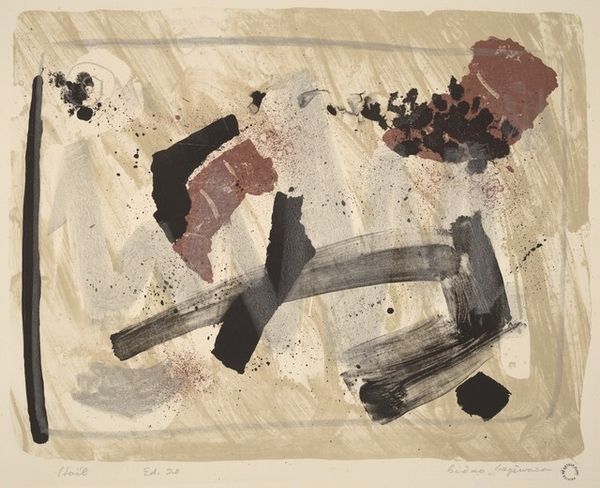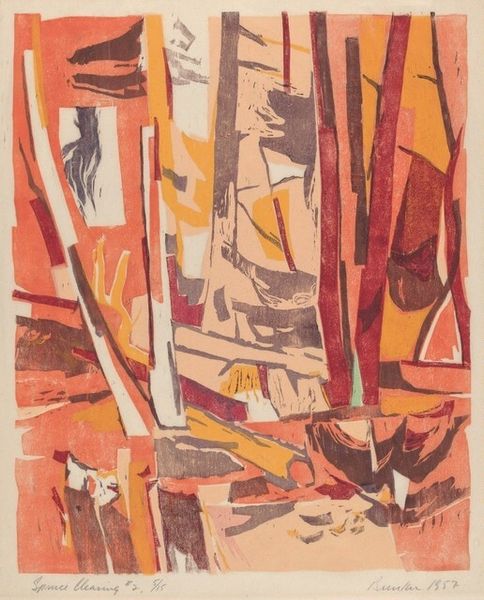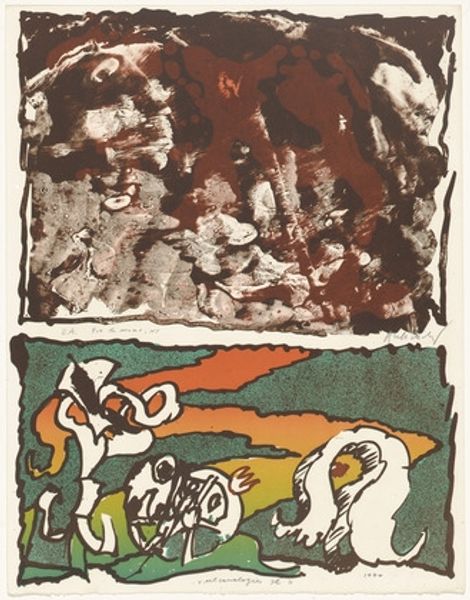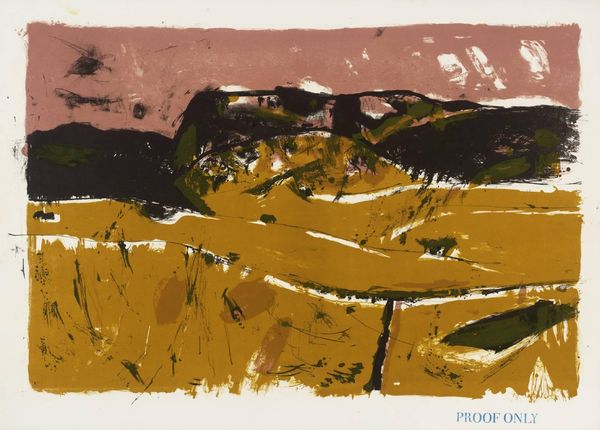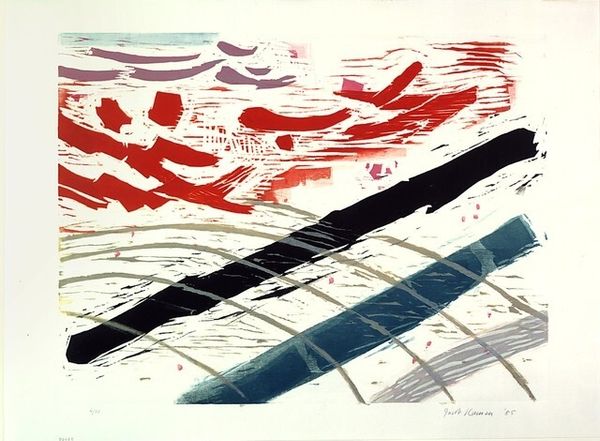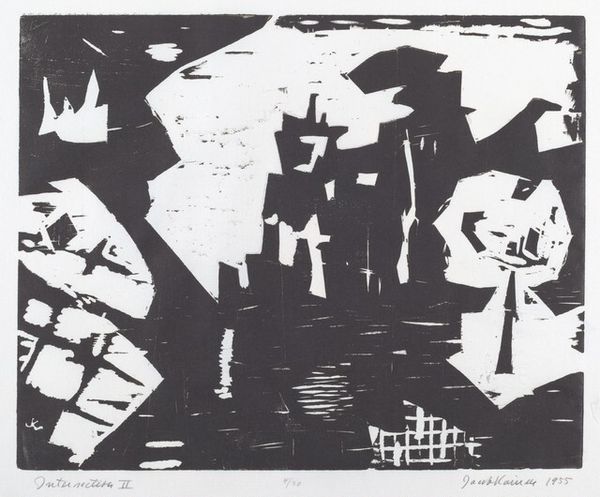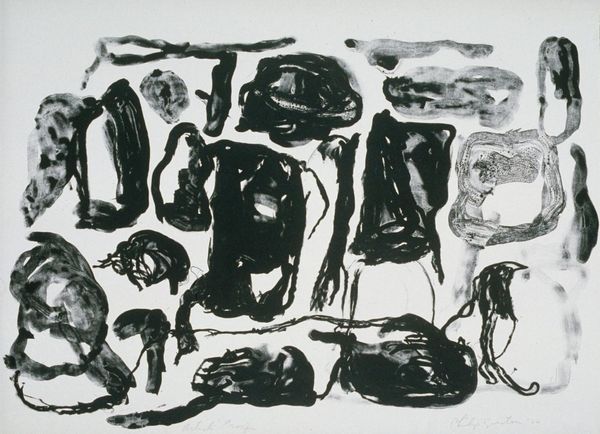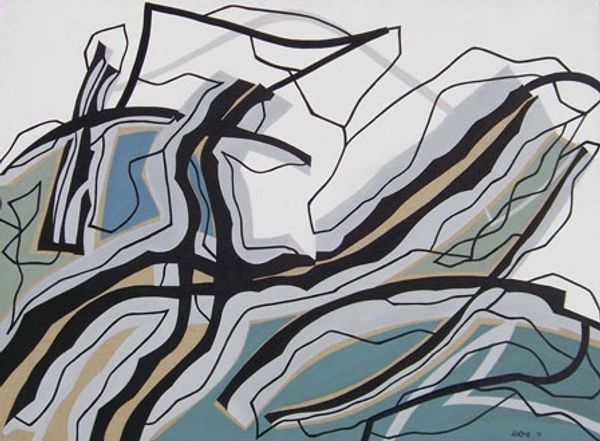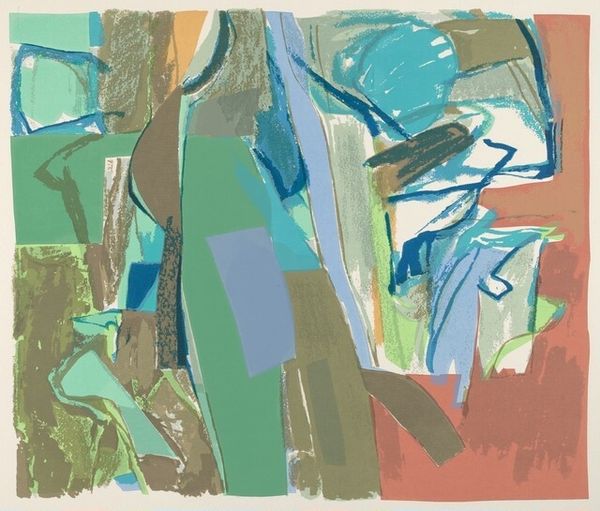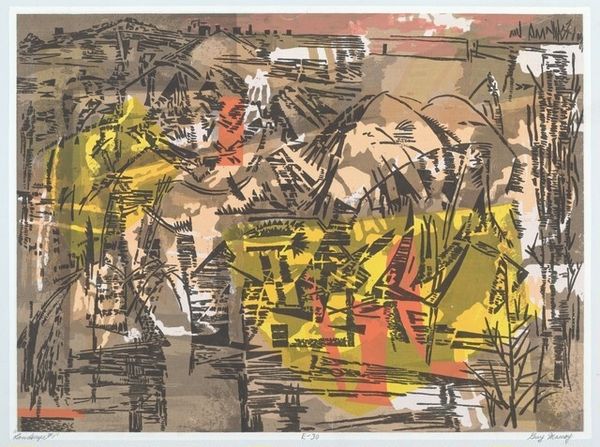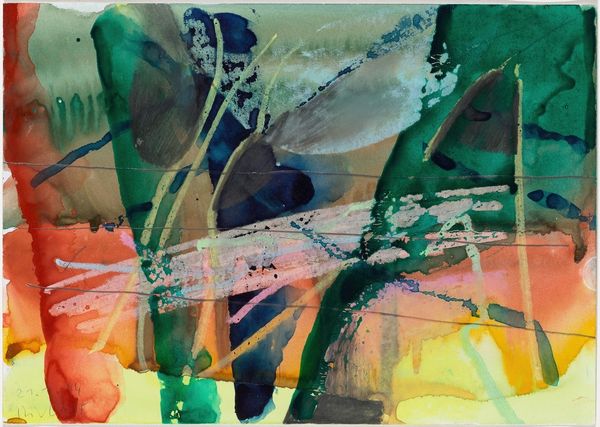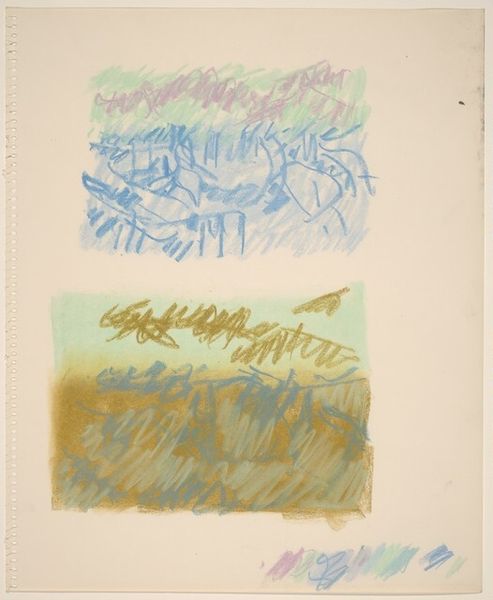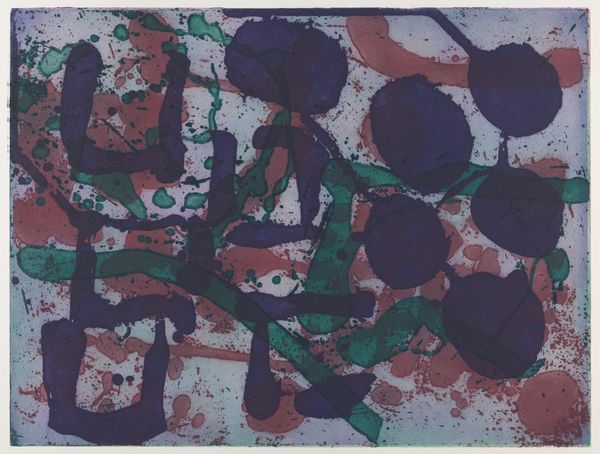
mixed-media, print
#
mixed-media
# print
#
geometric
#
naïve-art
#
naive art
#
abstraction
Dimensions: image (irregular): 19.05 × 28.89 cm (7 1/2 × 11 3/8 in.) sheet: 24.77 × 35.56 cm (9 3/4 × 14 in.)
Copyright: National Gallery of Art: CC0 1.0
Curator: This untitled piece by Albert Urban, created in 1944, presents an intriguing combination of printmaking and mixed-media techniques. What strikes you most about it? Editor: Immediately, I'm drawn to its ambiguous figuration. It feels almost dreamlike, perhaps reflecting the anxieties and uncertainties of the wartime era, with simplified figures appearing displaced within the landscape. Curator: Precisely. If we consider the material qualities, you see the process of layering inks which, coupled with the stark geometric forms, generates an unexpected tension. It is neither strictly abstract nor entirely representational. Notice how the color palette - the muted browns, grays and olives- works to both define and flatten the space. Editor: I wonder how the materials available during the war might have shaped his aesthetic choices? The limited palette may point to resource scarcity, impacting not just aesthetics but artistic possibilities broadly. It may speak about a specific identity in this place and period. Curator: Good point! It encourages us to think about constraints that fostered unique ingenuity. You see that there's an active conversation about what counts as elevated art versus working-class craft production with such an approach to image-making. Editor: The very notion of "Untitled" also invites consideration: is it withholding specificity a conscious resistance to readily consumable narratives within a volatile moment? Or is that to attribute too much intentionality to a work from that time? Curator: The lack of title certainly keeps the reading open, acknowledging possible personal stories embedded in abstract design and color field. It invites varied reflections on modern social circumstances and existential conditions. Editor: Perhaps we could propose it captures feelings of uncertainty about life and the future for so many during the conflict, yet retains quiet optimism for hope in rebuilding society through collective action afterward. Curator: Ultimately it is those very tensions in media and intention, as much as whatever symbolic value that interests, provoking engagement about our own sense of history being both a collective making and individually lived and felt experience. Editor: Indeed, considering the artwork in its historical frame can really reshape the reception process.
Comments
No comments
Be the first to comment and join the conversation on the ultimate creative platform.

